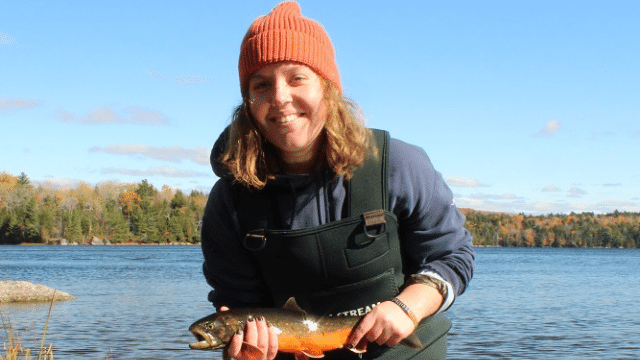
New Questions and New Possibilities: Sam Silverbrand Research Update
By Attis Bielecki, ME EPSCoR Student Writer
Samantha (Sam) Silverbrand is a second-year master’s student in Marine Biology within the University of Maine’s Marine Sciences program. She works under her advisor, Dr. Michael Kinnison, in his lab where work relating to molecular biology takes place. This is also where she conducts her research for the Maine-eDNA Program. In the last check-in with Silverbrand, she was working on a project relating to lake sediment eDNA. Since then, she has begun work on a different project, as part of adaptations made due to COVID-19 complications. Now she’s working on comparing different metabarcoding assays to see which one works best for identifying Gulf of Maine vertebrates.
For this new research, Silverbrand collected water samples from the New England Aquarium in Boston, and plans on testing three different metabarcoding primer sets so see which one can identify the most species within the tanks sampled. Metabarcoding is the sequencing of DNA that allows for detection and identification of many different taxa in one sample. A primer is a short sequence which starts a DNA synthesis.
Silverbrand stated that she has processed the samples through DNA extraction and has started running the different assays to see what species are identified. So far, she has run two separate assays, which she hypothesized may have different success levels for the identification of the species present in each tank.
Silverbrand stated that specific markers may work more efficiently or equally efficiently to each other. However, this wasn’t the case, as each marker set has shown different ranges of eDNA detection within the samples. She pointed out “The preparation for the sequencing of each assay is pretty different between each other, and the results for each assay may show a different scope of species.”
This correction in hypothesis has provided Silverbrand with added complexity to her research and has allowed her to incorporate new ways to look at the assays. She explained “There are multiple components that can go into tweaking something in an assay. Your thermal protocol can change or your primer concentration can change, and I’ve found that learning to adjust these parameters has brought out the best results.”
Silverbrand also stated that some molecular biology skills she’s learned along the way have helped. “There’s library preparation which is a simplifying term for all the lab work that leads up to sequencing.” she said. “One quality I’ve learned is to have patience, because this can be a lengthy process that has gotten frustrating at times.”
Once Silverbrand’s research is concluded, it will be applicable to projects conducted in the Gulf of Maine and will be a highly beneficial contribution to the Maine-eDNA program as her findings will allow researchers to utilize each eDNA assay with more precise targeting.
